1
Independent video from the 1970s on, has represented communities and ideas largely absent from, or misshapen by, mass media. The critique of social and political forces marginalizing communities united by gender, race, ethnicity, and sexual orientation is evident throughout the history of video production and curatorial practice, and can be traced through the collection of the Crista Dahl Media Library and Archive.For the early SVES collective members, their commitment to alternative culture informed the founding of SVES, and was manifest in their productions and outside interests as well.
"Social and political participation was important to almost, if not everyone at SVES: Paul Wong always challenged queer and race politics, Andy Harvey worked in the anti-nuclear movement; Janet Miller as engaged in politics and dance; Shaw Preus addressed anti-pesticides, pro-recycling, credit unions and women learning to fix cars; Charlie Keast was invested in local and federal politics; Michael Goldberg raised the Co-op RADIO tower, Barbara Steinman worked in the womenís movement with Reel Feelings; Ross Gentleman developed alternative banking in the Downtown Eastside; Kazumi Tanaka worked with Greenpeace; I was committed to art education; and Peg Campbell brought attention to violence against women." - Crista Dahl
Building on the historical impetus of the SVES founders, the second generation of Video Inners continued outreach and collaborative efforts with numerous communities. It co-sponsored programming with Vancouverís LGBT festival, Out on Screen, and the annual national celebration of labour, The Mayworks Festival. Curators produced expansive video exhibitions and symposia such as Asian New World: Video Art and Documentary (1987), media by artists of Asian descent living in North America; Visual Evidence (1987), a series of screenings and workshops focusing on sexuality, health, and sexual politics, curated in response to impending federal censorship legislation and provincial video classification efforts; and Deluding Documentary (1990), which looked at the intersection of video art and documentary. In 1991, Video In facilitated access to emerging First Nations artists. It shared its space and resources with the First Nations Access Program (FNAP), which was successful at increasing the production and distribution of their artistsí work.
The Library remained extremely active during these years. The programming stimulated curiosity and drew a new audience and researchers to the print and video library.
At the same time, commercial video had also come into its own in popular culture. Video rental stores flourished and personal video had become more practical as the size of, and entry-level cost into, home recorders decreased. Video, however, was also the primary distribution vehicle for pornography. The government, under pressure to address the real issues of child abuse and other sexual violence, chose to target imagery rather than behaviour. This led to three pressing issues for video artists: one was federal legislation that would limit freedom of artistic expression and could lead to criminal prosecution of artists and galleries; another was the dogged Customs enforcement that was targeting LGBT materials, including AIDS education material; and the third was the integration of video into provincial Film Classification systems.
In its effort to maintain unrestricted access to its collection, and in solidarity with artists of all disciplines who were experiencing increasing censorship and legal threats nationwide, The Video In became proactive in the growing national anti-censorship movement. The Video In joined the BC Library Association and its Freedom to Read Week Committee which advocated for the right of free expression and access as a means of drawing attention to videoís educational value. Video In members spearheaded The Coalition for the Right to View, a BC organization raising awareness on the issue of censorship and its effect on creative and intellectual practice. Due to the efforts of artists across Canada and internationally, the scope of these laws were ultimately revised or restrained.
Sources:
Crista Dahl Media Library & Archive
"Making Video 'In'", Editor Jennifer Abbott, Video In Studios, 2000.
"Anamnesia: Unforgetting", Editor Amy Kazymerchyk, VIVO Media Arts Centre, 2013.
2
Premiere of "Pesticides: The Hidden Assassins" PosterSeptember 1979
Video Inn, 261 Powell Street, Vancouver, British Columbia, Canada

3
Shawn Preus: 70s environmental movement2013
VIVO Media Arts Centre, 1965 Main Street, Vancouver, British Columbia, Canada
 Credits:
Credits:Interviewer: Kevin Doherty
Recorder: Anna MacDonald
Editor: Kevin Doherty
Transcript: Kevin Doherty
4
Lorna Boschman: Saying what hasn't been said2013
VIVO Media Arts Centre, 1965 Main Street, Vancouver, British Columbia, Canada
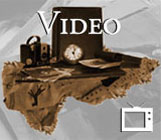 Credits:
Credits:Interviewer: Kevin Doherty
Cameraperson: Ann MacDonald
Editor: Kevin Doherty
Transcript: Kevin Doherty
5
"Big Fat Slenderella" excerpt1993
Vancouver, British Columbia, Canada
 Credits:
Credits:Artist: Lorna Boschman
6
Visual Evidence: A Series of Video Screenings, Workshops and Multimedia Events1987
Vancouver, British Columbia, Canada
 Credits:
Credits:Series curated and coordinated by Sara Diamond and Karen Knights
Sponsored by the Vancouver Artist's League and The Coalition for the Right to View
7
"Dead Man Was A Woman": Still1992
Vancouver, British Columbia, Canada
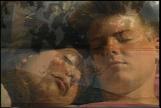 Credits:
Credits:Artist: Cornelia Wyngaarden
8
Lorna Boschman: Censorship in the 1980s2013
VIVO Media Arts Centre, 1965 Main Street, Vancouver, British Columbia, Canada
 Credits:
Credits:Interviewer: Kevin Doherty
Cameraperson: Anna MacDonald
Editor: Kevin Doherty
Transcript: Kevin Doherty
9
Asian New World: Small PosterJune 1987
Video In, 1160 Hamilton Street, Vancouver, British Columbia, Canada
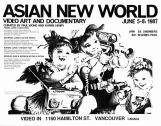 Credits:
Credits:Curated by Paul Wong and Karen Henry
10
"Chinaman's Peak: Walking the Mountain": excerpt1992
Vancouver, British Columbia, Canada
 Credits:
Credits:Artist: Paul Wong
11
"From Another Time" excerpt1990
Vancouver, British Columbia, Canada
 Credits:
Credits:Artist: Zachery Longboy
12
Deluding Documentary Symposium and Screenings: program cover1989
Vancouver, British Columbia, Canada
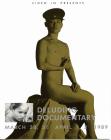 Credits:
Credits:Programme design: Joe Sarahan
13
Deluding Documentary: list of participants1989
Video In, 1102 Homer Street, Vancouver, British Columbia, Canada
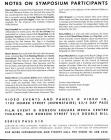 Credits:
Credits:Design: Joe Sarahan
14
"Ten Dollars Or Nothing" excerpt1989
Vancouver, British Columbia, Canada
 Credits:
Credits:Artist: Sara Diamond, Women's Labour History Project